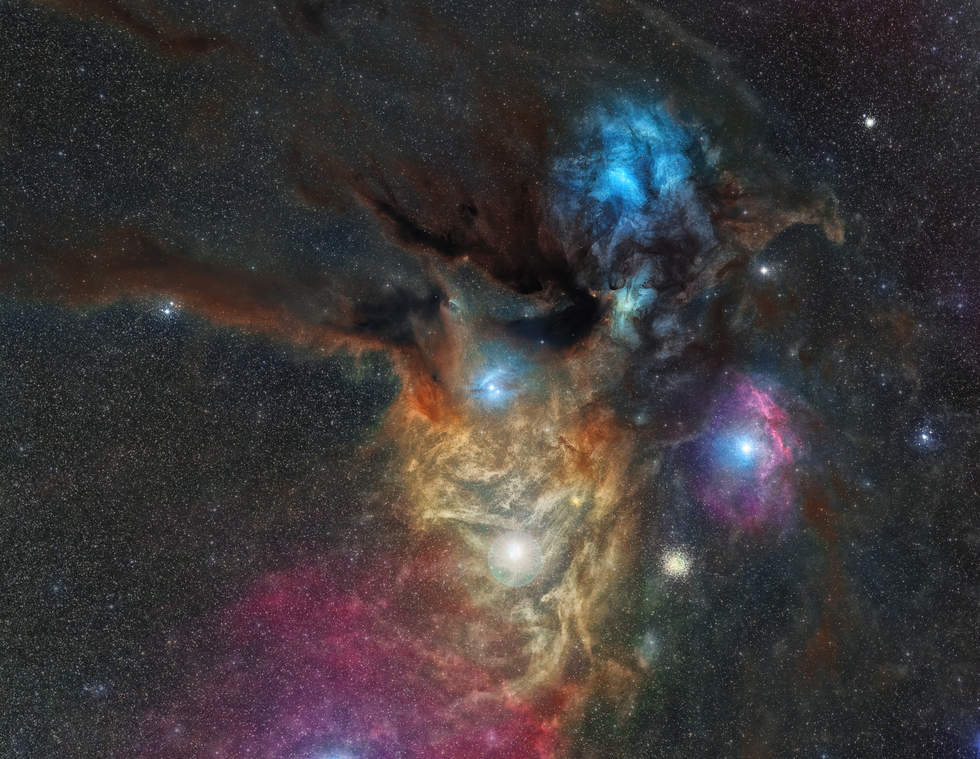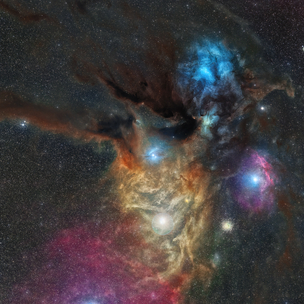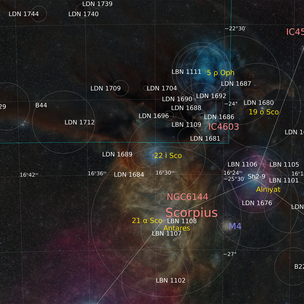Rho Ophiuchi cloud complex
0
12
Rho Ophiuchi cloud complex
The next version of the Rho-Ophiuchi cloud complex, where Im still trying harder and harder to squeeze out even the finest details.
The Rho Ophiuchi Cloud or Rho Ophiuchi Nebula is a dark cloud about 1° south of the star ρ Ophiuchi in the constellation of the Serpent Bearer. At a distance of 131 ± 3 parsecs (427 light-years), this cloud is one of the closest star-forming regions.
The Rho Ophiuchi cloud covers a sky area of 4.5° × 6.5°. It consists of two large regions of dense gas and dust. The first region includes the star-forming region L1688 and the two filaments L1709 and L1755. The second region consists of star-forming region L1689 and filaments L1712-L1729. These filaments span 10-17.5 parsecs, but some are only 0.24 parsecs wide. Some structures appear to be the result of a shock wave passing through the cloud from the direction of the nearby Scorpius-Centaurus association.
Temperatures in the cloud range from 13-22 K. Its total mass is about 3,000 solar masses. Half of this mass is concentrated in the L1688 region, which is also the most active star-forming region. In this region, 425 infrared sources have been detected that are believed to be nascent stars. Of these infrared sources, 16 were detected as protostars, and 200 were detected as T Tauri stars with ages ranging from 100,000 to 1,000,000 years.
The Rho Ophiuchi Cloud or Rho Ophiuchi Nebula is a dark cloud about 1° south of the star ρ Ophiuchi in the constellation of the Serpent Bearer. At a distance of 131 ± 3 parsecs (427 light-years), this cloud is one of the closest star-forming regions.
The Rho Ophiuchi cloud covers a sky area of 4.5° × 6.5°. It consists of two large regions of dense gas and dust. The first region includes the star-forming region L1688 and the two filaments L1709 and L1755. The second region consists of star-forming region L1689 and filaments L1712-L1729. These filaments span 10-17.5 parsecs, but some are only 0.24 parsecs wide. Some structures appear to be the result of a shock wave passing through the cloud from the direction of the nearby Scorpius-Centaurus association.
Temperatures in the cloud range from 13-22 K. Its total mass is about 3,000 solar masses. Half of this mass is concentrated in the L1688 region, which is also the most active star-forming region. In this region, 425 infrared sources have been detected that are believed to be nascent stars. Of these infrared sources, 16 were detected as protostars, and 200 were detected as T Tauri stars with ages ranging from 100,000 to 1,000,000 years.
SPECIFICATIONS
Telescope
Nikon 200mm f/2
Camera
FLI ML 16200
Location
El Sauce Observatory, Chile
Date of observation
March 17th, 2021
Filters
Astrodon RGB
Processing
Processed in PixInsight and Photoshop





